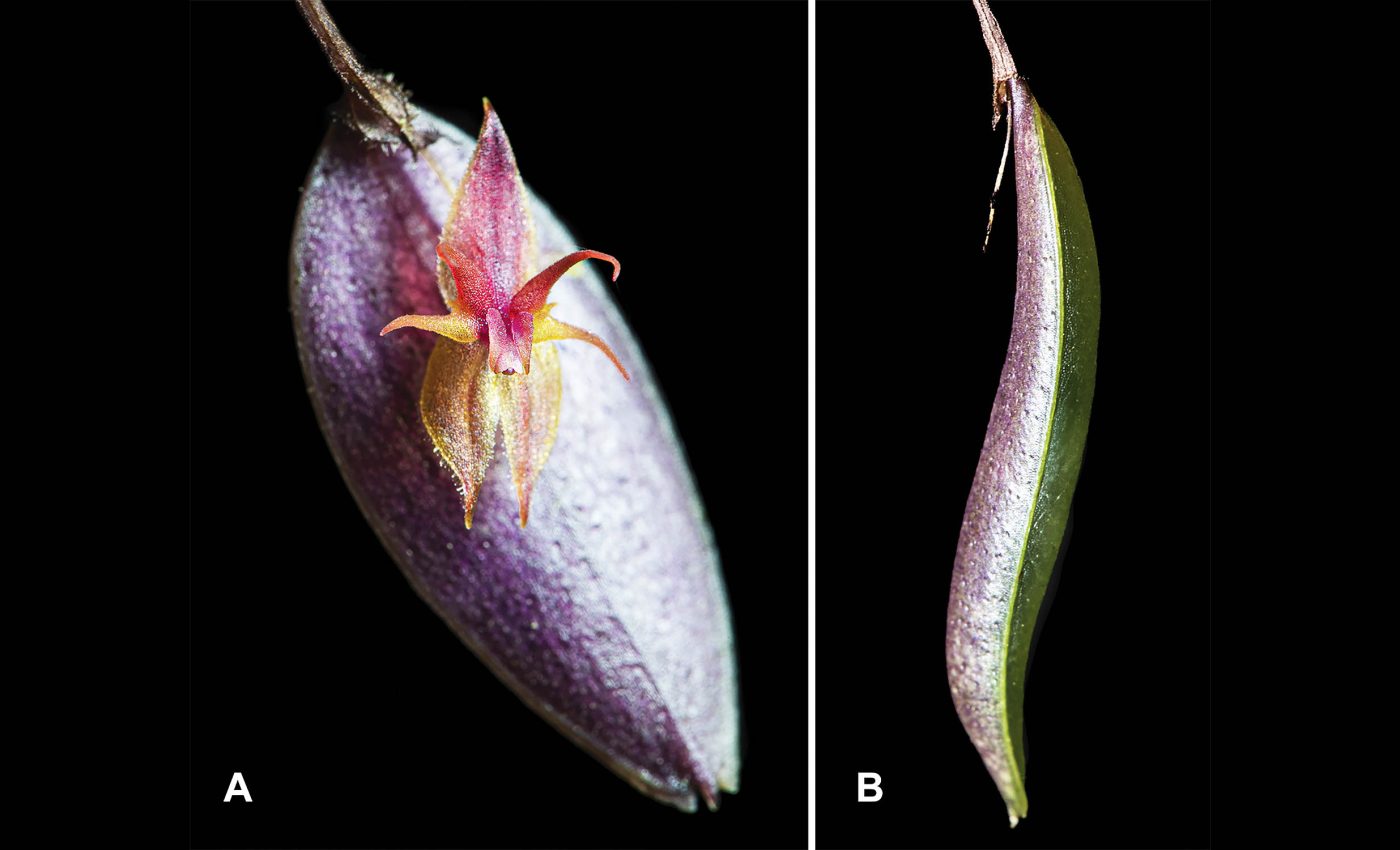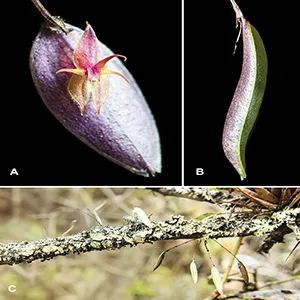
Newly-discovered orchid is already on the brink of extinction
A tiny orchid species recently discovered in the Colombian Andes has just been given a scientific name – Lepanthes nasariana. It lives between about 9,200 and 11,800 feet above sea level in cold, cloudy forests.
High in those mountains, cloud belts are drifting upslope and extreme events are becoming common, squeezing cool-loving species into thinner slices of habitat.
These changes mean the newly-described orchid could run out of suitable habitat within a human lifetime.
The work was led by Juan Sebastián Moreno, a botanist at Universidad del Valle in Colombia, who focuses on high Andean orchids.
His research often tracks how climate stress is reshaping Colombia’s mountain plants before they can even be fully documented.
Meet Lepanthes nasariana
In the cloud forests and grassy zones known locally as páramo – high Andean shrublands above the treeline – this orchid grows on tree branches.
Each plant stands just a few inches tall, with thick leaves and red-and-gold flowers pressed against the underside of its host leaf.
Most individuals live as epiphytes that perch on trunks and branches, drawing moisture from rain and mist instead of from soil. These epiphytes are plants that grow on other plants without taking nutrients from them.
Local field teams reached some populations only after hours of hiking along muddy ridges and crossing icy streams in protected areas.
Many of those sites lie inside national parks, but others grow in small forest fragments near farms, where changes in land use add pressure.
Discovered while in decline
Researchers coined the term Nasar Effect for cases where a species like Lepanthes nasariana is formally described even though models already predict it will disappear soon.
The name nods to Santiago Nasar in García Márquez’s novel Chronicle of a Death Foretold, a man marked for death long before he knows.
A recent study found that roughly three out of four yet-undescribed plant species already face extinction worldwide.
That pattern means many future finds – especially in isolated biodiversity hotspot, regions with many unique species – may already be sliding toward loss.
Across the tropical Andes, scientists see the bands of climate that support cold-adapted plants becoming patchier and moving uphill.
One modeling paper on Polylepis trees in these mountains projected losses of habitat and broken connections between high and low forests this century.
Climate is killing Lepanthes nasariana
To gauge the future for Lepanthes nasariana, the team built a species distribution model (SDM). This model is a tool that links sites where the orchid is known with climate data to map other areas where conditions match.
In the article, researchers report that under a high-emissions pathway the orchid could lose 96 percent of its suitable habitat by 2090.
Under that scenario, only small fragments of climate-friendly territory remain in two Colombian national parks that act as last refuges.
Even when they tested a midrange emissions pathway, the model still showed sharp drops in future habitat compared with today.
For a species known from fewer than ten sites, such a contraction leaves little room for error from storms, disease, or land use.
Uncertainties remain because the model uses only a handful of records and assumes that climate drives where the orchid can live.
Models like this cannot capture every microclimate or local threat, but they help identify species that may need attention before declines are obvious.
Heat threatens canopy life
Among plants that live on trees, orchids are part of a larger group of epiphytes that make up a significant share of tropical mountain diversity.
A recent Neotropical analysis of over 11,000 species concluded that nearly 60 percent already qualify as threatened under current criteria.
Recent experimental work that transplanted montane epiphytes into warmer plots found that under higher emissions 5 to 36 percent of species could disappear.
Short-term tests like these echo the warning from models, suggesting that even sturdy appearing canopy plants may not cope with sustained warming.

Hidden orchid vulnerability exposed
Because orchids and their relatives often depend on specific fungi and pollinators, shifts in temperature and moisture can break interactions that keep populations stable.
Lepanthes nasariana appears as Least Concern on the IUCN Red List, a system that ranks extinction risk, though its range would meet Critically Endangered.
Updating global datasets for epiphytic plants has shown that many species have smaller ranges than once thought, which raises their vulnerability to climate shocks.
Some of this recent research stresses that if we misjudge those ranges, we may misjudge how close epiphytes are to tipping into decline.
Keeping forest refuges intact
Protecting the forests where Lepanthes nasariana grows means keeping shade, moisture, and habitat links intact so that cooler pockets persist as temperatures rise.
Protectors on the ground can avoid clearing and building roads near cooler pockets, called climate refugia. These small areas maintain suitable conditions as regions warm, but disturbances can damage them easily.
Seed banks, collections in botanical gardens, and propagation programs are examples of ex-situ conservation – efforts that keep species alive outside their natural range.
For tiny orchids like Lepanthes nasariana, storing seeds, tissue, or whole plants under controlled conditions can buy time while societies work on cutting emissions.
Lessons from Lepanthes nasariana
When countries cut greenhouse gas emissions and support conservation in mountain regions, they give populations of this orchid a chance to remain in forests.
In Colombia and Andean countries, projects with local guides who know the mountains can locate orchid sites and track how they change over time.
People who live near these forests notice when streams dry earlier, clouds thin, or flowering patches fade, and their observations can guide conservation plans.
The study is published in PhytoKeys.
—–
Like what you read? Subscribe to our newsletter for engaging articles, exclusive content, and the latest updates.
Check us out on EarthSnap, a free app brought to you by Eric Ralls and Earth.com.
—–













